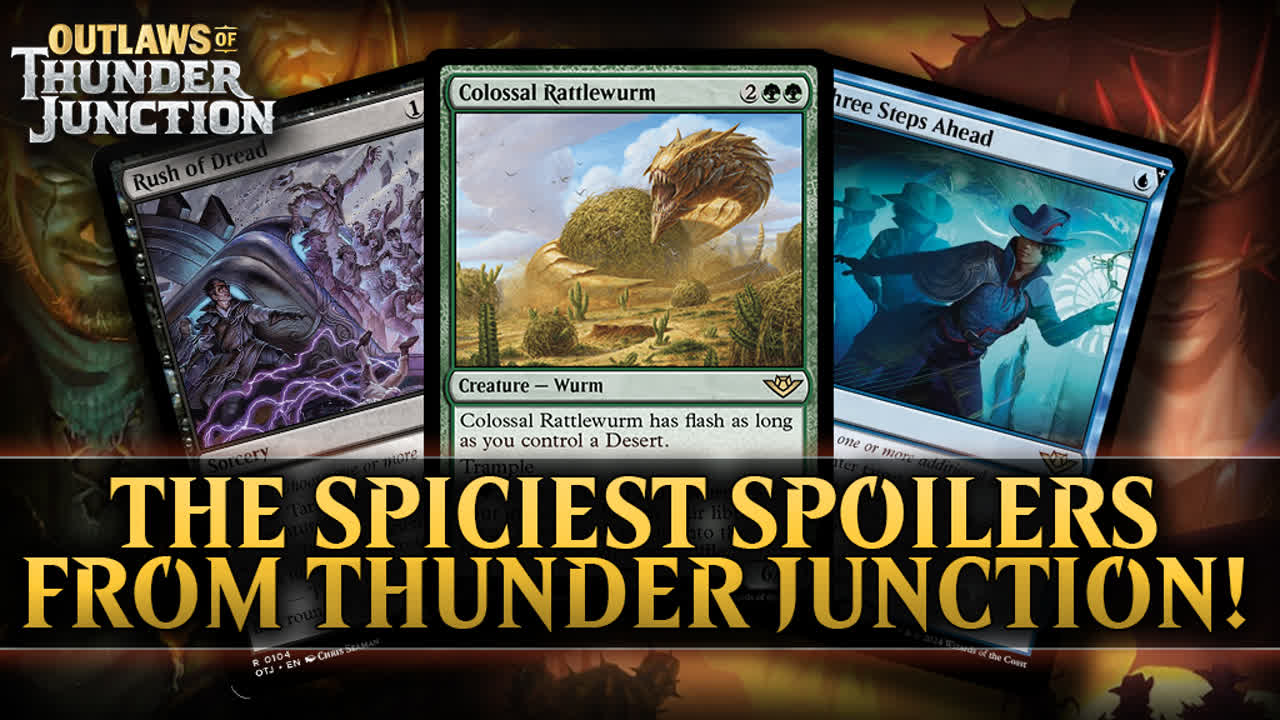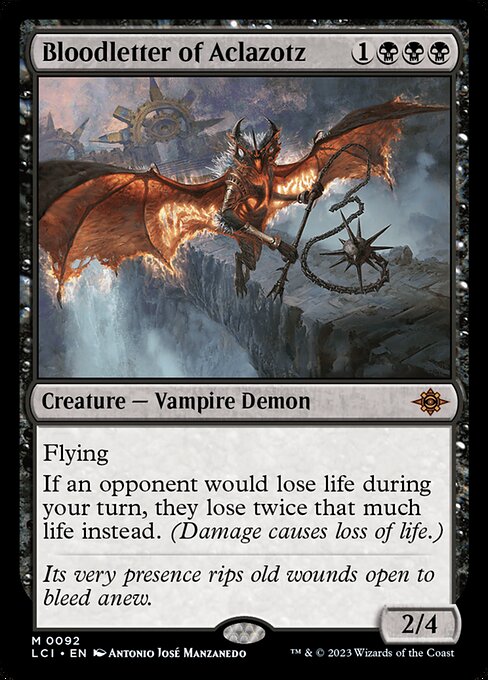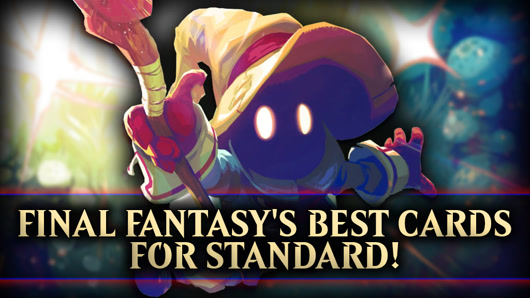Welcome Magic lovers!
With Outlaws of Thunder Junction spoiler season in full swing, Magic players have been treated to a bevy of build-around cards, new set mechanics, and more than a few powerful, potential additions to existing top-tier decks across several formats. Today, we'll be zeroing in on a few of the more tantalizing cards that have been revealed, and the best ways to build around or incorporate them into existing shells in order to maximize their effectiveness.
The Insta-kill
Let's start with what I consider to be one of the most potentially powerful cards from the new set, showcasing the new Spree mechanic, Rush of Dread.
This three-mana, black sorcery doesn't really cost three at all, as the Spree mechanic forces the player to choose at least one additional mode, which would normally make Rush of Dread cost four or five mana, scaling up to seven or eight mana to select two or three modes. While making an opponent sacrifice half of their creatures, discard half of their hand, or lose half of their life is impactful, it's never going to be game-winning on its own, as your opponent can still beat you with the remaining half of their creatures, cards, or life. Why is it so powerful then? Because of its interaction with another powerful black card, Bloodletter of Aclazotz!
A turn four Bloodletter into a turn five Rush of Dread kills one's opponent from any life total, regardless of how high it is. First, they lose half their life to the Rush, then they lose the other half to Bloodletter, which makes for a rather potent, 2-card combo all contained within the same color. Both pieces of the combo can also be pulled from anywhere in your deck with a tutor spell, like Beseech the Mirror.
Beseech not only finds Rush of Dread and Bloodletter of Aclazotz, but it can also tutor up any of the other high-impact black spells one chooses to round the deck out with.
Sheoldred, the Apocalypse is already one of the more powerful creatures in Standard, and fits perfectly here as it's the right color and synergizes nicely with Bloodletter.
Another potential Spree spell is Insatiable Avarice, which not only acts as additional card draw plus a tutor effect, but the second mode can also be used to target and finish off the opponent, perhaps with a Sheoldred in play to deal nine damage to them. A Bloodletter makes it eighteen.
With all of these powerful options existing in the same color, which also happens to have a ton of great removal, I for one am very excited to start experimenting with this core.
The Control Tools
Now, let's focus back on the existing Standard metagame for a moment, and look at some Outlaws of Thunder Junction cards that may slot nicely into the tier 1 decks that are currently running the show. One of the tier 1 decks currently putting up consistent results in both Standard and Pioneer is Azorius Control, and while the list has mostly been tuned and locked-in regarding the quantities of each spell, there are still a few flex slots. One new card from Outlaws of Thunder Junction that may be a perfect fit in one or two of those slots is the new, blue instant, Three Steps Ahead.
While it may seem like the three modes on the card are all rather subpar individually, it's the combined flexibility that makes this card worthy of consideration. Having a hard, three-mana counterspell in Standard is a must, and control decks will regularly play two or three copies of Disruption Protocol or Dissipate to deal with late-game threats that may prove problematic once the opponent has enough mana to play around No More Lies. The new Spree mechanic means one can have their cake and eat it too by running a Cancel, while also having the option to draw some action if Three Steps Ahead comes off the top of the deck in the late game, or the control player needs to dig to find an answer to an on-board threat. The utility of copying a creature can be back-breaking post-sideboard to double up that Regal Caracal in Pioneer, or Chrome Host Seedshark in Standard, to really slam the door shut on a match. Once you realize you can counter a spell and draw some cards for five mana, it starts to become reminiscent of the extremely powerful Cryptic Command. Don't sleep on this one in your various control decks in Pioneer and Standard, as it certainly deserves a chance to be tested.
The Big Ramper
The next Outlaws of Thunder Junction card that warrants some serious Standard consideration is Colossal Rattlewurm.
A very overpowered body costing only four mana for a 6/5 with trample that is also trivially easy to have enter the battlefield at instant speed? Sign me up.
The first, and most obvious, place where this massive wurm could find a home is in a green-based beatdown deck, perhaps green/red, where the enormous damage it's capable of dealing can be best exploited. Dodging sorcery-speed removal like Sunfall is excellent, and pressuring the control decks on their end step puts them in a precarious position against the aggressive strategies.
However, it may also be an excellent addition to a Bant control deck, as its ability to exile itself from the graveyard to fetch a Desert card from one's deck and put it on the battlefield is very useful in a deck that wants to make all of its land drops into the late game. The control deck having a solid finisher that also doubles as ramp if it gets dealt with is very appealing, but this will almost certainly hinge on how many playable Deserts there are. Currently, there is one Desert that has already been spoiled that really does work nicely with the Rattlewurm, and that is: Arid Archway, the colorless-mana-producing bounce land.
Consider the potential curve of a deck playing a surveil land on turn one, milling a Colossal Rattlewurm, then exiling it from the graveyard on turn two to put an Arid Archway into play in order to cast the second Colossal Rattlewurm, which now has flash, from your hand on turn three. That's a very powerful start for Standard deck, and one that the Wurm makes possible.
Last, but never least, some of the most important cards to hit Standard from Outlaws of Thunder Junction are the 'fast lands' cycle originally printed in Kaladesh.
It's hard to overstate how important these lands are to many decks, especially those which operate in the early turns of the game and don't often play more than twenty or twenty-one mana sources. One of the biggest winners here is almost certainly Boros Convoke, which benefits greatly from the printing of Inspiring Vantage, as it had to resort to terrible lands like Thran Portal to make its mana work. Having a dual land which comes into play untapped immediately in the early turns benefits the Boros deck more than any additional creature or spell which could have been printed in its colors, and will cement the aggressive strategy as one of the best choices in Standard.
Another deck which stands to gain a lot from the fast lands coming back to Standard is Esper Raffine. While the Esper color combination does have plenty of dual lands to choose from in Standard, many of them come into play tapped, especially in the early turns, such as Shattered Sanctum. Replacing the Sanctum with the new Concealed Courtyard is a huge bump for the Esper Midrange decks, which are typically trying to curve a one drop like Skrelv, Defector Mite, Novice Inspector or perhaps the new Tinybones, the Pickpocket, into a turn two Dennick, Pious Apprentice or Deep-Cavern Bat, then capping it off with a Raffine, Scheming Seer on turn three. That's a tall order, especially when many of the existing dual lands in those colors so often come into play tapped during the early turns. Those troubles are now gone, as the Esper deck will have not one, not two, but three fast lands at its disposal, in the form of Darkslick Shores, Seachrome Coast, and the new Concealed Courtyard.
The Jeskai group of colors also picked up not one, but two fast lands in Inspiring Vantage and Spirebluff Canal, making it possible for new archetypes like Izzet Aggro or Jeskai Control to be much more viable. How many low-to-the-ground decks are hovering just outside of tier 1, simply waiting for the right dual land to be introduced in order to make them viable contenders in Standard? Perhaps now a few new strategies will emerge.
While we only have time to touch on a few of the new cards spoiled from the upcoming Outlaws of Thunder Junction set today, check back in next week once we have the complete picture to see what dangerously powerful brews we've come up with!

















